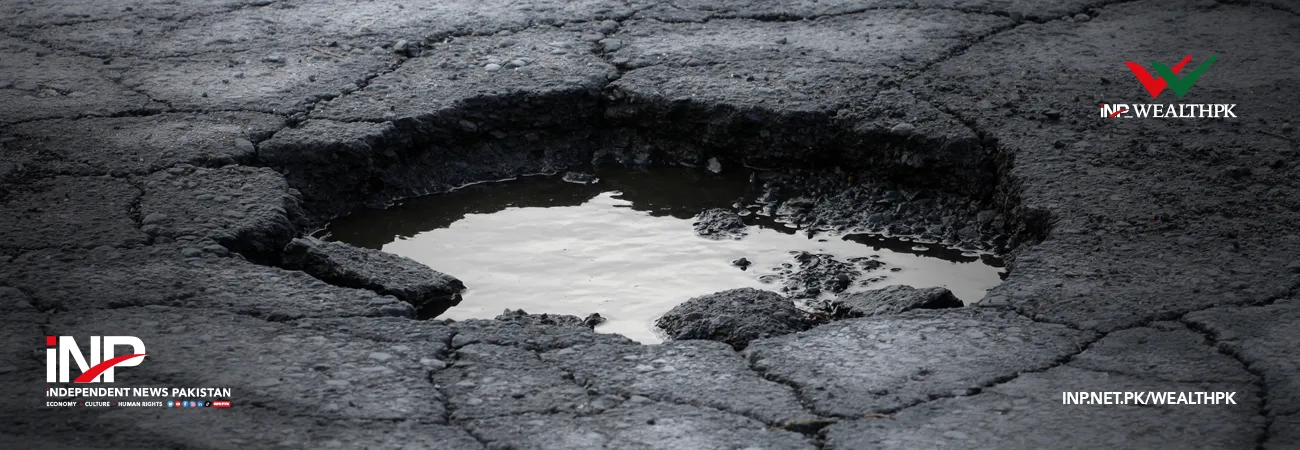INP-WealthPk
Naveed Ahmed
The potential associated with deploying floating photovoltaic (FPV) technology can be gauged from the fact that if only 1% of the world's natural basin surfaces get covered by FPV units, 25% of the global electricity demands will be fulfilled. Pakistan is highly suitable for implementing the FPV technology due to sufficient water bodies and a favourable climate throughout the year.

Dr Muhammad Abid, Director Interdisciplinary Research Centre (IRC) and Professor of Mechanical Engineering at COMSATS University Islamabad, Wah Campus, told WealthPK that Pakistan is one of the most suitable countries to deploy the FPV systems. He said Pakistan has various natural or artificial water bodies and high solar irradiance available throughout the year.
Dr Abid said technical knowledge and large-scale PV system implementation are already prevalent locally. Hence, he said, the effective and efficient deployment of the referred systems is conveniently possible within the country, which can help resolve the country's energy needs. Furthermore, the FPV will benefit arid regions by preventing significant water losses from evaporation.
“Water mapping of Pakistan for installation of FPV systems shows Pakistan has many water reservoirs, including dams, canals, natural or artificial lakes, and similar water bodies. Therefore, suitable and substantial area for the deployment of FPV systems is available for utilisation,” he said.
Dr Abid said that installing PV units on water surfaces upscales the energy conversion output of photovoltaic units up to 15% compared to their land-based variants. The referred increase in energy conversion is due to the water body's consistent cooling effect, which does not let the FPV units get overheated. Secondly, installing the FPV units on water bodies can limit the evaporation effect by up to 70%, reducing water losses significantly.
Thirdly, the installation of PV units on land demands sparing a significant amount of area/land to accomplish the deployment of a power generation system. In contrast, the FPV units require the utilisation of space that already has been covered by water and is being utilised for water supply, agriculture, fisheries, or running hydel power plants. Hence, the FPV units save the land's cost and spare it for different purposes such as agriculture, mining, tourism, and more.
According to the World Food Program (WFP), Pakistan currently has 164 dams. Punjab province has the highest water resources, followed by Balochistan, Khyber Pakhtunkhwa, Sindh, Azad Kashmir, and Gilgit-Baltistan. In addition to dams, Pakistan has one of the best canal systems in the world, which is associated with the constructed reservoirs that makes Pakistan highly suitable for deploying FPV technology.
Dr Abid said that educating the prospective stakeholders about the potential attributed to each location while considering the available space for FPV system deployment could be a policy matter.
According to the International Commission on Large Dams (ICOLD), Pakistan's canal system currently consists of 57 canals, 45 of which are regular, while 12 are linked canals. Three large water reservoirs and 85 small dams comprise the canal system. Overall, the canal system is 56,073 kilometres long. For the deployment of FPV systems, perennial canals are the best choice.
In addition to the availability of water reservoirs, Pakistan also possesses an ideal climate throughout the year for the efficient functioning of FPV panels, which makes it economically feasible to develop these systems. Additionally, the systems must be widely implemented as soon as possible. Researchers have concluded that floating power plants with an average lifespan of 25-30 years have an attributed payback period of five years based on cost estimations and output generated.
Dr Abid said the average life span of solar panels is 25 years, and disruption in one plate does not stop the whole energy supply. Replacing only the damaged plate is sufficient for the efficient working of the system. So, it is one of the feasible technologies for energy production.
Credit : Independent News Pakistan-WealthPk













